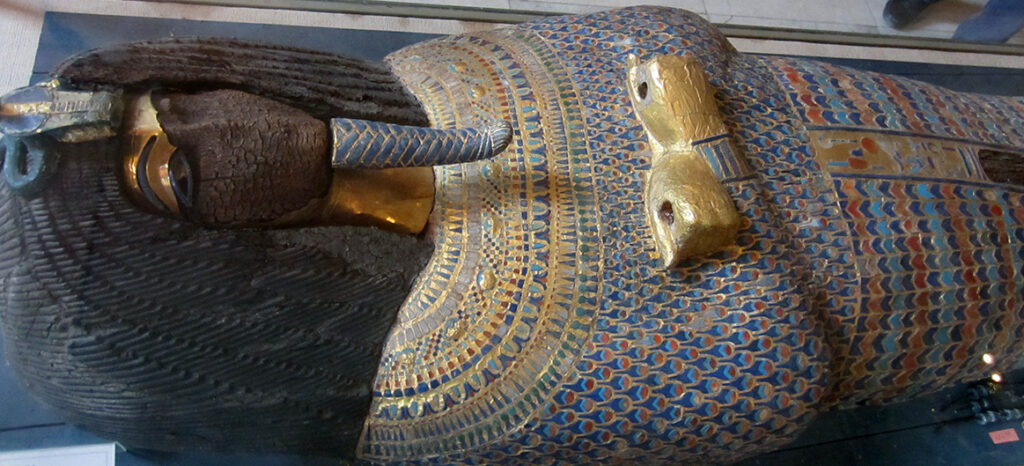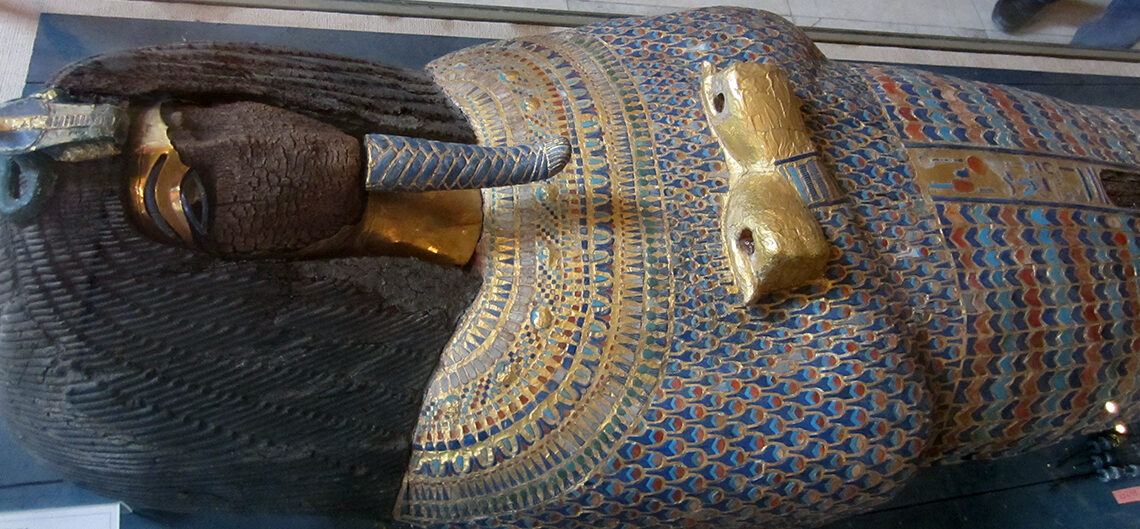Tomb KV55 in Luxor Valley of the Kings Egypt | Secrets Egyptian Pharaonic tombs and Archaeological discoveries and The royal Pharaonic coffins and mummy discovered inside the cemetery tell us the historical facts of the civilization Ancient Egypt and the kings of the Pharaohs from the era of King Akhenaten and King Tutankhamun and King Amenhotep III Which is considered one of The Royal Cache of Deir el-Bahri Discovered.
Hurghada lovers Offer Luxury Hurghada to Luxor Tours | El Gouna to Luxor Tours | Makadi bay to Luxor Tours | Sahl Hasheesh to Luxor Tours | Soma bay to Luxor Tours.
Tomb KV55 Facts and secrets:
- It was discovered in 1907 AD by archaeologist Edward Irton and fully funded by American lawyer Davis.
- The entire cemetery was stolen, deliberately destroyed, and most of the inscriptions and drawings on the walls were removed before Ancient Egyptian Grave Robbers from residents Thebes the West during revolutions and later eras.
- Many names were found Egyptian Pharaohs kings and Female Pharaohs “Pharaonic queens of Egypt” on the walls of the cemetery. like King Akhenaton and king Smenkhkare and King Tutankhamun and King Amenhotep III and Queen Tiye from Eighteenth Dynasty of Egypt who lived in an era The New Kingdom of ancient Egypt civilization.
- discovered Mummy its owner has not yet been identified, and it is considered a puzzling mystery and a secret Egyptian Tombs Pharaonic in the Valley of the Kings.
- Analysis and x-ray examinations were performed by the researcher, Dr. Elliot Smith, to identify the mummy, and it was discovered that it belonged to a young man who died at the age of 25.
- In 1931 AD, the inscriptions and texts were examined Hieroglyphic language on Pharaonic Cartridges turned out that it belonged to King Smenkhkare.
- In 1957 AD, the coffin was restored and the texts and drawings on it were studied until it became clear that it belonged to King Akhenaten.
- Archaeologist Cyril Aldred studied and analyzed the mummy again discovered inside Tomb KV55 it was discovered that there was enlargement of the lower jaw, which is the same disease that King Akhenaten suffered from as a result of a disorder in the pituitary gland.
- The tomb was carved into the rocks of Mount Kurna.
- The ceilings of the cemetery’s vestibule were damaged and worn out as a result of rainwater and floods leaking into the cemetery.
- There were deliberate attempts by members of the ruling royal family to remove and destroy the king’s names from the coffin and remove the golden mask from the mummy, in addition to removing the inscriptions and writings on it Pharaonic Egyptian Cartouche It is located on the golden band surrounding the body of the Pharaonic mummy, which does not indicate the name of the mummy’s owner.
- Archaeologists gave the name “Tell el-Amarna Cartouche” to Tomb KV55 due to discoveries that the artifacts date back to the era of King Akhenaten’s reign on the throne of ancient Egypt.
Cemetery description:
- You can reach the entrance door through a stone staircase down.
- It contains Stamp seals in ancient Egyptian tombs On an inscription of Ibn Awi holding 9 of the enemies of ancient Egypt.
- The tomb contains a blocked rectangular opening believed to be the entrance to the burial chamber.
- Behind walls Tomb KV55 there is a hall containing stone blocks resting on a dilapidated cabin made of gold with a door with brass hinges above it. Two wooden panels were moved to The Egyptian Museum in Tahrir Square “Museums in Cairo“.
- On the north side we find the burial chamber, which contains the gilded royal coffin.
- On the other side is a rectangular room devoid of drawings and engravings on the walls.
Discoveries inside Tomb KV55:
- Royal darkening of matalab wood with gold foil.
- 3 chapels made of wood belonging to King Amenhotep III, covered with gold foil.
- A coffin made of wood and decorated with gold, belonging to King Akhenaten.
- An artifact of a snake-shaped statue made of bronze.
- Antiquities “Pharaonic amulets or Ancient Egyptian Amulets” made of gold and faience, especially for King Akhenaten and others for Queen Tiye.
- A wooden statue of King Akhetaten was presented.
- Number 4 Canopic jar To store the entrails of the mummy’s body inside a small room inCemetery 55.
- A group of pottery vessels made of faience, engraved with the names of King Amenhotep III and King Akhenaten.
- Limestone pieces engraved with a Pharaonic inscription of a king Tutankhamun and the king Amenhotep III.
- Clay seals containing a royal inscription of King Tutankhamun and wooden pieces with the names of King Akhenaten and Queen Tiye written on them.
Studies conducted on Tomb KV55:
The skeleton:
There was a big difference between Egyptology for the lineage of the skeleton that was found inside the tomb, there is an opinion that it belongs to King Akhenaten or King Smenkhkare, and there is an opinion that it belongs to King Tutankhamun’s brother.
Many scholars believe Egyptology that Queen Nefertiti, She changed her name to Smenkhkare after the death of her husband, King Akhenaten, to rule the throne of ancient Egypt.
- There is a theory from archaeologist Dr. Theodore Davis that this tomb belonged to Queen Tiye, wife of King Amenhotep III, based on the tools that contain an inscription with her name in addition to the heads Canopic jar Which indicates the shape of Queen Tiye’s face, in addition to the discovery of a royal text on the walls confirming that the tomb was built specifically by direct order from King Akhenaten.
- There is another theory from archaeologist Dr. Ater Wegal, that the skeleton belonged to a man, King Akhenaten, as the coffin was transported from Amarna to Tomb KV55, all names and inscriptions related to the period of King Akhenaten’s rule were then removed High Priest of Amun in good time.
- Cyril Aldred discovered that the skeleton of King Akhenaten was the result of examinations showing that the Pharaonic king was suffering from enlargement of the lower orbit and a severe attack on the pituitary gland.
- The skeleton was damaged and decomposed as a result of a falling roof Tomb KV55 on the royal coffin, causing the cover to break and causing damage to the royal mummy and its interaction with the outside air, which led to its decomposition.
- Douglas Derry conducted a study on the structure and skull and proved that it resembles the skull of King Tutankhamun, and there is a similarity to the elongation at the back of the head, and that it is of the same blood type.
- In 1984 AD, the teeth were studied by Dr. James Harris and it was found that the age of death was 35 years.
- In the year 2000 AD, the skeleton was re-examined again by Dr. Joyce Feller, and it was found that the age of death was 25 years.
- It was recently discovered that there was partial curvature of the spine, which indicates that the age of death was more than 60 years.
Coffin:
- The royal coffin was examined in 1931 AD and it was found that the inscriptions and writings in hieroglyphics belonged to King Smenkhkare.
- In 1957 AD, Egyptologist Dr. Sir L. Gardner carefully examined the inscriptions after completely restoring the coffin and installing the gold foil. It was found that the coffin belonged to King Akhenaten.
Note:
Additional information, secrets and historical facts are being added Tomb KV55 in the Valley of the Kings in Luxor…


